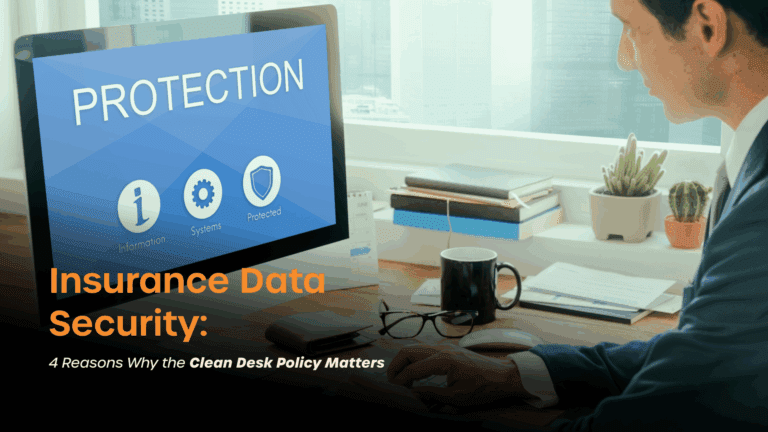
How Remote Employee Management Software Protects Sensitive Data with eDLP
- Rajnish Kumar
- 6 Mins

Summary
In today’s world of distributed teams, protecting sensitive data is more critical than ever. That’s why many organizations are using remote employee management software.
In today’s world of distributed teams, protecting sensitive data is more critical than ever. That’s why many organizations are using remote employee management software. It does more than just track work — it safeguards confidential information, enforces compliance, and reduces the risk of costly breaches. With features like enhanced data loss prevention (eDLP), this software has become a cornerstone for modern businesses managing remote teams.
Why Data Protection Is a Top Priority
Remote work introduces new challenges for data security. Employees are working from different locations, using various devices and networks. Without proper safeguards, sensitive information can be accidentally exposed or intentionally misused. Some common risks include:
- Sensitive documents shared through unsecured apps.
- Unnoticed activity that could violate regulations.
Organizations handling healthcare records, financial information, or legal documents cannot afford these risks. That’s why remote employee management software with eDLP is essential — it actively prevents unauthorized actions while giving IT teams visibility and control.
How eDLP Works to Protect Data
Enhanced Data Loss Prevention (eDLP) is a key feature that sets modern solutions apart. Unlike traditional monitoring tools, eDLP goes beyond observing behavior — it actively blocks risky activity.
Here’s what eDLP does:
- Prevents Unauthorized File Transfers
Employees cannot share sensitive files without authorization. - Monitors Application Use
eDLP tracks usage of apps where sensitive data is stored or shared. - Blocks Risky Behaviors in Real Time
Actions like screenshots, printing confidential documents, or uploading files to unapproved platforms are blocked instantly. - Maintains Audit Trails
Every action is recorded, making it easy to demonstrate compliance with regulations.
By integrating eDLP, remote employee management software ensures that sensitive data stays secure, even in a fully distributed workforce.
Challenges Remote Teams Face Without Proper Tools
Many organizations make the mistake of relying on basic tools or office-focused workforce management systems that don’t cover security and compliance. Common issues include:
- Fragmented Oversight: Teams use multiple apps, creating blind spots for IT and compliance teams.
- Compliance Risks: Industries like healthcare, finance, and legal have strict regulations that must be followed at all times.
- Human Error: Even well-trained employees can accidentally expose sensitive information.
A robust remote management solution with eDLP addresses these challenges by combining workforce oversight with active data protection.
Benefits of Remote Employee Management Software
When implemented correctly, remote employee management software offers multiple advantages:
- Centralized Management: One platform manages remote teams, making monitoring and reporting easier.
- Compliance Assurance: Automatic logs and alerts help organizations stay audit-ready.
- Reduced Risk of Data Breaches: eDLP prevents sensitive information from leaving approved systems.
- Efficiency Without Micromanagement: Employees can work freely within secure boundaries, improving trust and accountability.
- Integration with Existing Tools: Many platforms integrate with HR systems, collaboration apps, and cloud storage.
How RemoteDesk Protects Sensitive Data
Among modern solutions, RemoteDesk stands out because it is specifically designed for remote-first organizations that need security, compliance, and workforce management in one package.
Key features include:
- eDLP for Enhanced Protection: Blocks unauthorized actions and prevents data leaks before they happen.
- Unified Workforce Oversight: Combines monitoring, reporting, and remote management in one dashboard.
- Audit-Ready Logs: Creates detailed reports that demonstrate compliance effortlessly.
- Scalable Solution: Works for small teams and large enterprises alike.
- Integration Capabilities: Connects with existing remote workforce management software and workforce management systems seamlessly.
With RemoteDesk, CIOs and compliance officers can protect sensitive data without creating friction for employees.
Real-World Scenarios
- Healthcare Organizations
HIPAA requires strict control over patient records. RemoteDesk ensures sensitive data is never shared outside approved systems and keeps audit trails for inspections. - Financial Firms
Banks and financial service providers must follow PCI-DSS and SOC 2 rules. eDLP prevents sensitive financial data from being uploaded to personal devices or unapproved cloud platforms. - Legal Services
Law firms handle confidential client files daily. RemoteDesk prevents accidental leaks while providing complete visibility for compliance purposes.
Mistakes to Avoid When Choosing Software
- Overlooking eDLP Capabilities: Not all remote management tools provide proactive data protection.
- Selecting Office-Only Systems: Tools built for in-office teams may fail with distributed workforces.
- Ignoring Vendor Reliability: Always choose solutions from trusted vendors experienced in security and compliance.
The Future of Remote Data Protection
As remote work grows, so does the need for secure systems. Future expectations include:
- AI-Powered Risk Detection: Real-time alerts for unusual activity.
- Advanced Compliance Reporting: Automated, regulator-ready documentation.
- Seamless Remote Workforce Management: Centralized platforms integrating HR, IT, and security functions.
Organizations that adopt eDLP-enabled remote employee management software now are better prepared for these upcoming challenges.
Conclusion
Protecting sensitive data in remote environments is no longer optional — it’s a necessity. Remote employee management software with enhanced data loss prevention (eDLP) provides the tools organizations need to manage risk, enforce compliance, and maintain trust.
By combining workforce oversight, centralized control, and real-time data protection, solutions like RemoteDesk ensure that remote teams operate securely and efficiently. For CIOs and compliance leaders, adopting such software is not just a technology choice — it’s a business-critical strategy.
1. What is RemoteDesk?
2. How does RemoteDesk ensure compliance with regulations like PHI, HIPAA & PCI DSS?
3. Can RemoteDesk integrate with our existing security and productivity tools?
4. How does RemoteDesk handle remote and hybrid workforce management?
5. What types of analytics and reporting does RemoteDesk offer?
Get Started Today
Sign up in minutes. Secure your remote
workforce with confidence.
See how RemoteDesk makes compliance and data protection effortless.




